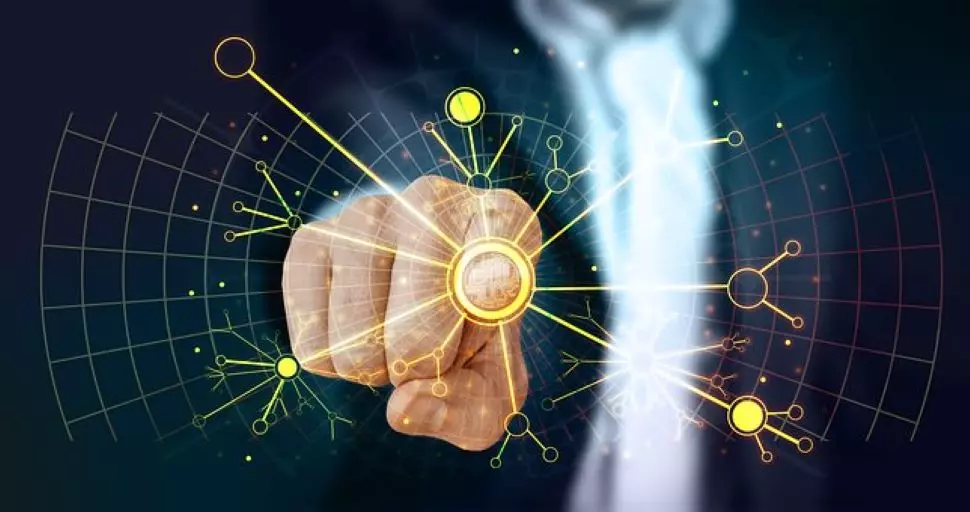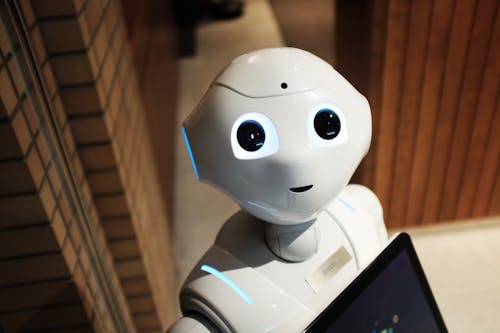The AI Revolution of Assistive Devices for Visually Impaired People
2019-11-18 | By Orcam Staff

Assistive Devices for Visually Impaired
In today's rapidly advancing technological landscape, the AI revolution has paved the way for groundbreaking innovations in the realm of assistive devices for the visually impaired. With an unwavering commitment to enhancing accessibility and independence, these specialized assistive devices for visually impaired individuals have made remarkable strides. Among these transformative developments, artificial intelligence stands at the forefront, driving a new era of assistive devices that empower visually impaired individuals to navigate the world with unprecedented ease and confidence. One such extraordinary example is OrCam, a pioneering company at the vanguard of the assistive technology movement, harnessing the power of AI to redefine the possibilities for the visually impaired. In this article, we delve into the awe-inspiring advancements brought forth by these assistive devices for the visually impaired, particularly those driven by AI technology, exploring the impact of OrCam and similar innovations on the lives of millions around the globe.
According to a recent study, there are approximately 253 million people around the world who live with visual impairment, 217 million of which have a moderate to severe condition of visual impairment. As technology becomes more advanced, so do assistive technology devices. For people with visual impairment, this is big news. Assistive technology for visually impaired people can determine the difference between a constant reliance on others or new independence in day to day life. For the visually impaired, this means a better quality of life.
The Revolution of Technology and AI

Artificial Intelligence became common in consumer electronics within the last 10-15 years. The main reason for this new reality is the competition for consumer sales by the large technology corporations selling electronic devices to the public. The biggest change came with the introduction of the smartphone in 2007. Smartphones became the herald of the constant use of electronics in our lives today. The availability of multiple advanced features and constant internet connection increased the dependency and usage of technology devices.
In addition, it has increased the number of tasks completed by the average person both at work and in their personal life. Mobile access to information and the availability to instantly communicate remotely with anyone has taken human productivity to a whole new level. Before this new age we are now living in, assistive technology for visually impaired people, like other consumer electronic products, provided limited usability and features. In the same way that the average technology user has enhanced their productivity, assistive technology users can now achieve personal life and career-related accomplishments with their new AI devices.
Assistive Technology for Visually Impaired

When a new feature is added to any smart device, it generally has little impact on that user’s quality of life. This may come as an improvement in device speed, or something similar. The degree to which that user’s life will improve, will probably not be life-changing. Considering the fact, that they will have eventually completed the task at hand or receive the required information. However, when a blind or visually impaired person is able to benefit from a new feature in an assistive technology device, they usually experience a dramatic improvement in their quality of life. In their case, the difference is not more time or more effort required for completion of a task. The difference is between reliability on others and independence thanks to the usability of assistive technology for visually impaired people.
OrCam MyEye 2

Let’s review, for example, text reading, and shopping. In both use-cases, people with visual impairment would not be able to perform them without human assistance. With wearable assistive technology such as OrCam MyEye 2, people who are visually impaired can easily do so on their own. All they need to do is use hand gestures for any text to be read out loud to them. There is also an option to use earphones for more privacy and noise reduction. This way they can read completely on their own. From their favorite books, letters they receive or any other printed text they need to read from. Even menus, street signs, and any other printed text can be read using the device. Digital surfaces such as computers and smartphones can be read independently as well using OrCam MyEye 2.
When shopping independently, visually impaired users can read barcodes, product labels, ingredients, and nutritional value from any box or package in their hand or that is in front of them on the shelf or in the aisle. Before the introduction of this new breakthrough device to the market, errands with such a high level of text reading and information retrieval were considered impossible for people who are visually impaired. Many people living with visual impairment live an independent life without assisted living. Reading and shopping are among the most important activities that they need to be able to perform on their own.
High Expectations By Consumers

This new generation of AI-powered consumer electronics created new expectations by consumers. Multiple advanced features are now expected in devices people purchase and use on a daily basis. Before AI devices, assistive technology for visually impaired people provided limited usability and very few features. A single or double function device was a reasonable solution before AI devices.
Electronic devices are now reaching a new level of benefit to the consumer’s lifestyle and quality of life. This is where artificial intelligence comes in. Artificial intelligence helps devices learn user’s habits and preferences and adapts accordingly. Where in the past a user needed to adapt to the device, today devices will adapt to the user. For people using assistive technology, this benefit will most likely increase beyond the benefit to the average consumer.
How AI is Changing the World

The changes in life for people with visual impairment goes way beyond the improvements to assistive technology for visually impaired people. Every person in countries whose governments or companies are using AI-driven technology is experiencing changes as well. Electricity, transportation, and even water systems are being integrated with AI technology. Systems are learning electricity usage, traffic behavior, and even water consumption habits. These systems are making changes to the operating systems to reduce overloads and malfunction issues. They are even being used to reduce the resources being used to operate them.
Almost everything we use or engage with has been integrated with technology using AI. Machines that are now operating on their own are reducing the number of people required to operate them. This is changing how companies use employees for their daily operations. Many jobs may not exist in certain job categories in the future. Many service providers are now using AI to learn how to improve their customer service and to resolve customer issues faster and more efficiently than by human customer service. Where once we relied on human interaction, AI-driven systems are now becoming the norm. Even though we have seen many changes in our lives due to AI technology, it is still only the beginning.



